Armored medical vehicle BTR-3С (Ukraine)
The development of a promising medical vehicle was carried out as part of the program for the further development of the new BTR-3 armored personnel carrier. Recall that at the beginning of the two thousandth, the Kharkov Engineering Design Bureau for them. A.A. Morozova launched a deep modernization of the existing armored personnel carrier BTR-80. Through a variety of changes and improvements it was planned to improve the general characteristics of the equipment, as well as to adapt the design to the production at Ukrainian enterprises. By the middle of the decade, the design of the new armored vehicle was completed, after which tests of the experimental equipment started.
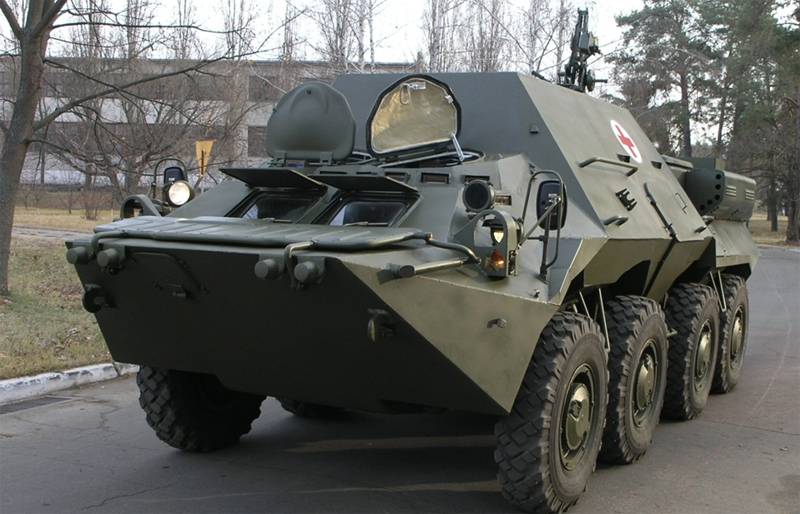
General view of the BTR-3C. Photo Kiev armored plant / kbtz.com.ua
Taking into account the experience of operating Soviet armored personnel carriers of the old models, the authors of the BTR-3 project began developing new modifications of such vehicles, differing from each other in weapons and other equipment, and also offered several special purpose vehicles. On the basis of an armored personnel carrier it was proposed to build self-propelled mortars, anti-tank missile systems, command and staff vehicles, etc. In addition, it was planned to develop an armored medical machine designed to evacuate the wounded from the battlefield and provide them with first aid.
Unlike the base armored personnel carrier, created in Kharkov, the new medical vehicle had to be developed by specialists of the Kiev armored plant. For several years, the organization-developer was engaged in shaping the appearance of technology, after which she prepared a project and built the first prototype. Taking into account the type of base armored vehicle and the new destination, the medical / sanitary vehicle was designated BTR-3С. Other names, as far as is known, were not assigned to this development.
Specific requirements were made to the prospective project, directly related to the intended role of the machine on the battlefield. It was necessary to develop a model of armored vehicles capable of moving over rough terrain and evacuating the wounded. It was necessary to envisage the possibility of transporting fighters with light wounds, able to sit, and lying down, with more serious injuries. The tasks of the crew of the car should have included first aid, for which it was necessary to place a stock of dressing materials, medicines and some special devices on board. The use of an existing chassis should have provided an acceptable level of mobility and protection.
Being a specialized modification of the BTR-3 armored personnel carrier, which, in turn, was a modernized version of the older BTR-80, the BTR-3C medical machine retains some of the features that manifest themselves both in appearance and in the layout. In general, with the exception of some specific features, the Ukrainian medical machine looks like other models created on the basis of Soviet armored personnel carriers.
In terms of protection, the BTR-3С corresponds to other vehicles of its family. The hull is welded from rolled armor plates with a thickness of up to 8-10 mm, which helps protect the crew and the wounded from small-arms bullets weapons. There are no additional means of enhancing the reservation with the original project. The layout of the case was changed in accordance with the new role of the machine. The front part of the hull is still given under the control department, the former amphibious unit became a compartment for the doctor and the wounded, and the feed, as before, accommodates the engine and transmission units.
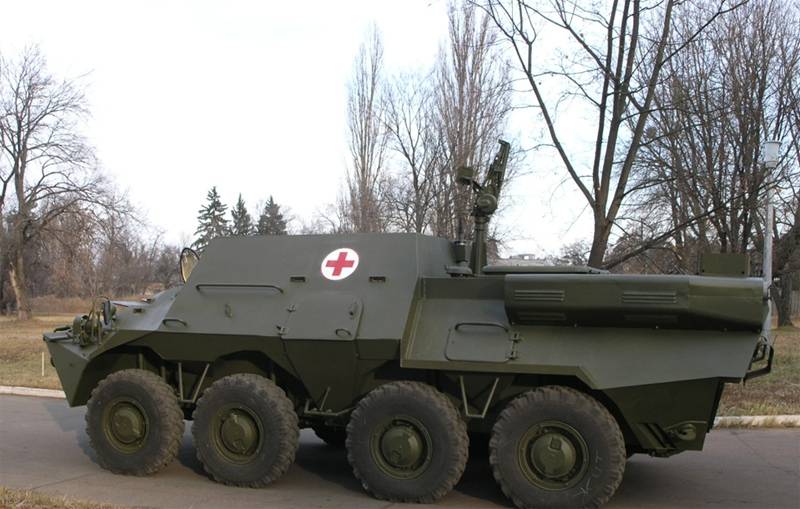
View of the port side. Photo Kiev armored plant / kbtz.com.ua
The design of the hull of the base armored personnel carrier has been changed in accordance with the new tasks. To accommodate medical equipment and places for installing stretchers, the troop compartment had to be significantly increased. In addition, some other housing changes were required. The BTR-3C saves the existing frontal part of the body of recognizable shape, consisting of several sheets placed at an angle to the vertical, and supplemented by zygomatic aggregates. The top front sheet has openings for the glazing, covered by movable covers. Office of management received a modified roof. Now this armor plate is not horizontally positioned, but tilted forward. It still has two hatches with a set of viewing devices.
The central part of the hull, like the older armored personnel carriers, has sides, consisting of two inclined sheets. At the same time to increase the internal volumes it was proposed to use larger upper sheets. Modified boards, as well as additional trapezoidal frontal and stern leaves, form a characteristic superstructure, prominently protruding above the other elements of the roof of the hull. Behind the second pair of wheels in the sides of the hull double doors remain. Their lower element leans down, forming a footboard, and the top when opening goes forward, giving additional protection.
The aft part of the hull, in general, remained the same. As before, the boards are used, consisting of several inclined elements. The stern leaf is located with some tilting back. On top of the engine compartment is covered with a horizontal roof with hatches for servicing the internal units. During the modernization, the BTR-3 and the medical car received some new external devices, such as exhaust pipe shells, etc.
It is proposed to install the MTU 6R 106ND21 hp 326 diesel engine in the aft compartment of the hull. German production. An Allison 3200SP transmission is connected to the engine, driving all eight wheels. It is possible to disable the drive of the two front axles. The undercarriage, unchanged borrowed from the base armored personnel carrier, has four axles with large diameter wheels. The wheels have an individual torsion suspension, reinforced by hydraulic shock absorbers. For mobility, the medical machine retains the stern jet propulsion unit.
The crew of the armored medical vehicle BTR-3C consists of three people: the driver, the commander and the doctor. The driver is in the office of control, at the left side. In his place, he must get through the hatch in the roof or through the medical department. For driving observation in safe areas it is proposed to use standard frontal glazing. It is also possible to observe through the open hatch. In a combat situation, the driver must use periscopes. At night it is proposed to use a night vision device TVNE-4B. To the right of the driver is the commander. At his workplace also has its own hatch. To monitor the terrain, the commander must use the combined TKN-3 device.
The doctor is invited to be in his place in the central compartment. Access inside is provided by side doors as well as a sunroof. If necessary, the doctor can also monitor the surrounding space, for which viewing instruments are installed in the sides of the medical department. In most situations, the doctor must work not only inside the armored corps, but also outside it.
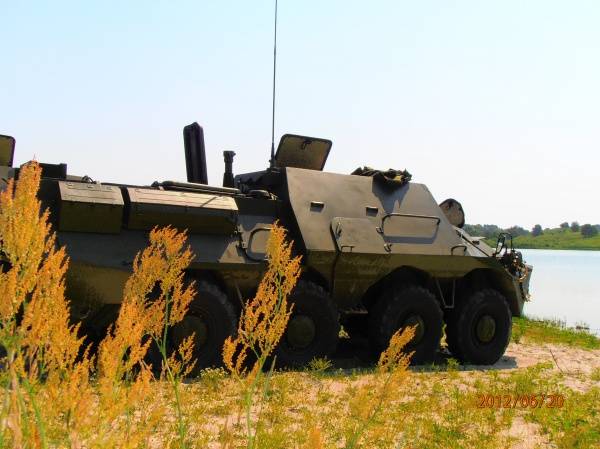
BTR-3C at the landfill. Photo Zhytomyr armored plant / zhbtz.com
The crew must communicate with each other using intercom P-174T, connecting up to three subscribers. For external communication, a radio station type VPG-950 is used. Inhabited compartment is equipped with air conditioning power 10 kW.
An unusual feature of the medical vehicle BTR-3 is the presence of its own weapons. Behind the superstructure of the central compartment, at the left side of the hull, the project provides for the installation of a rack with a mobile machine-gun installation. The parameters of the latter allow you to mount a large-caliber machine gun NSV. The installation design ensures shelling of targets in any azimuth direction with elevation angles up to + 75 °. However, the use of a machine gun can be associated with some difficulties.
The main task of the armored personnel carrier BTR-3С is the transportation of the wounded and the provision of first aid. For this, the crew of the medical machine has a set of special equipment for various purposes. The medical department provides boxes and racks for the installation of special equipment, as well as the transport of medicines, dressings, etc. There are several sets of fasteners for the installation of stretchers with lying wounded.
On board the armored car transported some hard stretchers. There is also a set of four sanitary stretcher type PNNUMX. With their help, lying wounded should be loaded into the medical department, where they are fixed. If necessary, the injured can receive a tire from the set of the B-2200 kit. At the side of the office there are two lockers for medical drugs. Medicines of group "A" are proposed to be transported inside a separate safe of a reinforced construction with locks. For some drugs, there is a small fridge on board.
The doctor also has a breathing apparatus DP-9 and a defibrillator. For power supply of electrical and electronic devices, a DC / AC class current converter is used. Installation of a washstand is provided. Both inside the medical department and outside of the armored vehicle, the doctor can use field bags with the appropriate configuration, field attendant kit, etc.
The size and equipment of the medical department allow you to simultaneously carry up to six lightly wounded seated fighters, for which appropriate seats are provided inside the armored hull. When transporting bed patients, only four sets of stretchers can be placed in the existing ward. In all cases, the doctor has the opportunity to interact with the wounded and provide them with the necessary assistance.
By its dimensions, the medical vehicle BTR-3С basically corresponds to the base armored personnel carrier. Machine length - 7,85 m, width - 2,9 m, height - 2,8 m on the roof of the superstructure. The combat weight is no more than 15,5 tons. The new engine, according to the developer, allows the armored vehicle to reach speeds up to 100 km / h on the highway. When driving on water, the water cannon accelerates it to 8-10 km / h. Cruising range - 600 km. Despite the updated body and other tasks, the armored vehicle retains the ability to overcome various obstacles. In terms of similar characteristics, the BTR-3С almost does not differ from the original armored personnel carrier.
Technique of the new type was first introduced in the middle of the last decade. Soon the armored vehicles of the BTR-3Е1 family were submitted to the competition of the Thai armed forces. In 2007, the Ukrainian vehicles won the tender, which resulted in an order to supply a large number of armored personnel carriers and specialized vehicles based on them, including armored medical vehicles BTR-3С. Soon, the defense industry of Ukraine began to fulfill the order and began to transfer the required samples of military equipment to the Asian state.
According to the available data, in connection with the specific role of the armored personnel carrier BTR-3С were built in small quantities. To date, Thailand has received no more than 8-10 medical machines. At the same time, the main reason for the small amount of medical equipment is primarily associated with the limited requirements of the customer. Medical vehicles are required by armies in much smaller quantities than armored personnel carriers.
Initially, armored medical vehicles based on the BTR-3Е1 were produced by the Kiev Armored Plant. In the 2014 year, according to the results of some decisions of the leadership of the Ukrainian military industry, the project documentation was transferred to the Zhytomyr armored plant. Since then, the medical vehicle BTR-3С is present in the lists of products of two companies at once. However, as far as is known, so far such a replenishment of the nomenclature of samples available for fabrication has not yielded any real results.
According to available data, the latest serial BTR-3C were released in 2015 year as part of an agreement with the Thai armed forces. More than this technique from the conveyor did not go. Other countries do not show interest in Ukrainian armored vehicles, while Ukraine itself is simply not able to purchase a large number of modern armored vehicles. As a result, the fate of the project remains in question.
All built serial BTR-3C were transferred to the Thai army. Ukraine, as far as is known, is not armed with such machines. As a result, participants so-called. the antiterrorist operation has to use other vehicles to evacuate the wounded, including those that do not have special equipment to solve such problems.
It should be noted that one of the reasons for the lack of new orders may be the specific appearance of the armored vehicle. As another option for the further development of the BTR-80 armored personnel carrier, the Ukrainian medical vehicle BTR-3C retains some of the characteristics of this vehicle. Moreover, certain features of the basic design turn out to be serious shortcomings that significantly impede the normal operation and performance of the main tasks.
One of the main reasons for claims to the armored personnel carriers BTR-80 and equipment based on them is the aft arrangement of the engine compartment, due to which the troop compartment is located in the center of the hull and is equipped with side hatches. Dropping through the side doors is associated with increased risks for the landing. In the case of a medical machine, this flaw manifests itself in a new way. The dimensions of the hatches and the layout of the medical department, at least, significantly complicate the loading of lying wounded. In addition, after loading the stretcher with the victim is required to unfold in the right way and secure in the appropriate place. Even with a sufficiently high add-in, such a process should be at least very difficult.
As a result, the medical machine will have to stay in one place longer, subject to unnecessary risks. At the same time, crew members involved in evacuating a wounded person may in some circumstances be injured or injured, which will further complicate their work.
The wheeled chassis of an armored personnel carrier BTR-80 can no longer be called fully modern and meets the requirements of the time. At the same time, it gives quite high mobility characteristics, and is quite suitable for use as the basis for specialized machines. The level of protection of a modified case of an existing structure may be the subject of a separate dispute. Obviously, the medical machine needs some protection, but its exact parameters must be determined in accordance with the conditions of possible operation. Thus, in certain situations, the anti-bullet protection may be too weak, while the counter-booking may be redundant.
In its present form, the BTR-3 armored medical vehicle had some characteristic drawbacks directly related to the design of the sample taken as the basis. Correction of these shortcomings was not possible. At the same time, the army still needs equipment to evacuate the wounded. New projects of Ukrainian development were created using more successful chassis. Since the end of the two thousandth, Kharkov specialists have proposed several variants of medical machines based on the BTR-4Е1 armored personnel carrier. This technique was produced in fairly large quantities and has significant advantages over the BTR-3C.
On the materials of the sites:
http://kbtz.com.ua/
http://zhbtz.com/
http://ukroboronprom.com.ua/
http://bmpd.livejournal.com/
http://strangernn.livejournal.com/
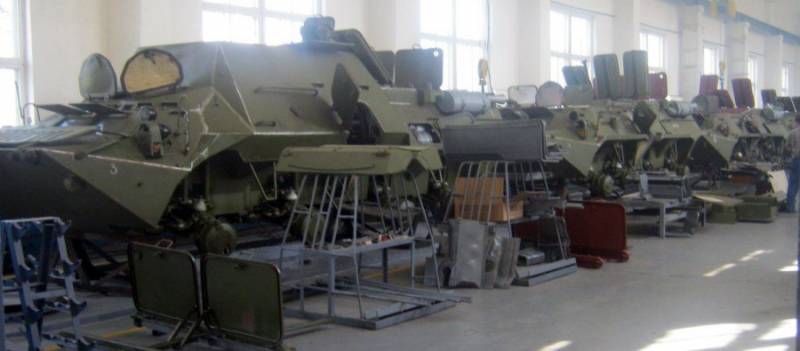
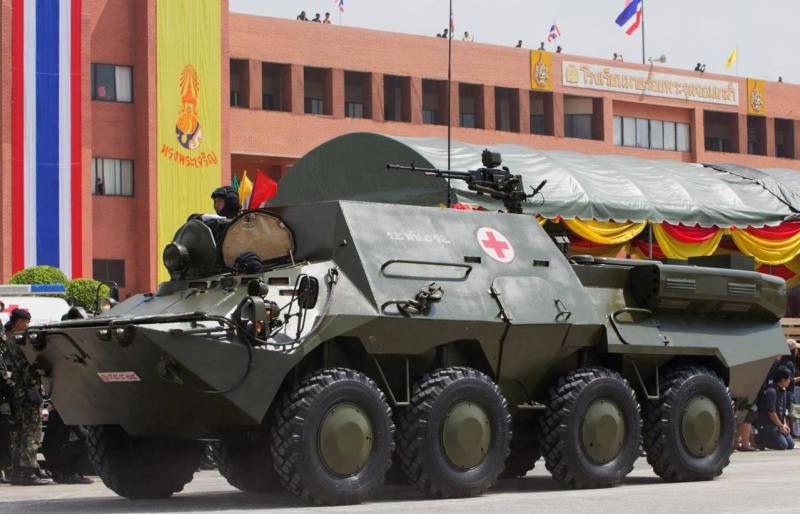
Information